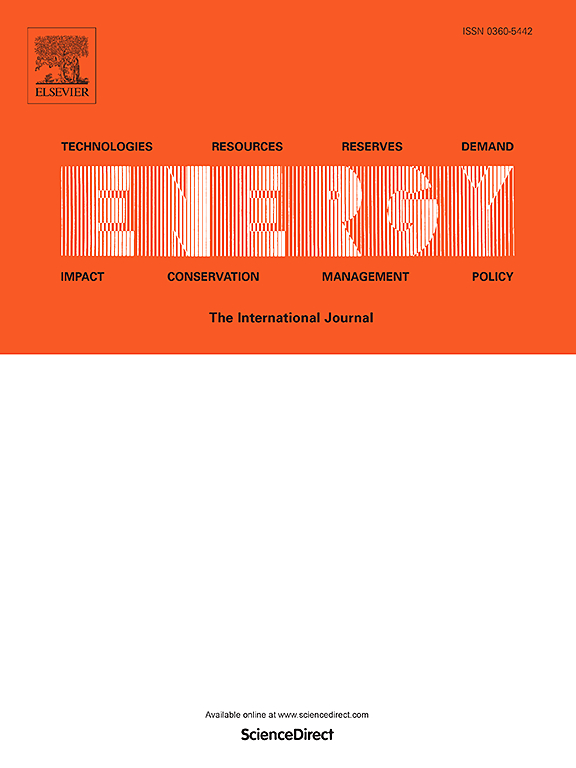Performance evaluation and failure analysis of Na3.5Fe2.5(PO4)1.5P2O7‖hard carbon sodium-ion batteries: Implications for large-capacity full-cell configurations
IF 9
1区 工程技术
Q1 ENERGY & FUELS
引用次数: 0
Abstract
Na3.5Fe2.5(PO4)1.5P2O7‖hard carbon (NFPP‖HC) sodium-ion batteries, owing to their low cost, stability, and safety, show great promise for large-scale energy storage applications. However, most existing research has primarily focused on material optimization, often limited to half-cell systems, which restricts the applicability of the findings to full-cell configurations. This study, from the perspective of practical application in sodium-ion batteries, systematically evaluates the performance of large-capacity pouch cells using different commercial HC, with particular attention to the potential risks associated with using high-voltage platform HC in full-cell configurations. Comprehensive failure analysis reveals that HC with higher platform capacities typically exhibit poorer sodium-ion storage kinetics due to compression of interlayer channels, leading to fluctuations in the anode potential and promoting dendrite growth. This process is accompanied by complex interfacial reactions that significantly exacerbate sodium loss. Further visual reconstruction and molecular dynamics simulations indicate that wider interlayer spacing and higher defect concentrations play key roles in the "insertion" and "filling" processes of sodium ions. The study also proposes effective approaches for improving battery performance through optimized charging strategies, electrolyte adaptation, and electrode design. These findings provide valuable theoretical insights into the optimization of HC in sodium-ion batteries and offer important guidance for future industrial applications.

求助全文
约1分钟内获得全文
求助全文
来源期刊

Energy
工程技术-能源与燃料
CiteScore
15.30
自引率
14.40%
发文量
0
审稿时长
14.2 weeks
期刊介绍:
Energy is a multidisciplinary, international journal that publishes research and analysis in the field of energy engineering. Our aim is to become a leading peer-reviewed platform and a trusted source of information for energy-related topics.
The journal covers a range of areas including mechanical engineering, thermal sciences, and energy analysis. We are particularly interested in research on energy modelling, prediction, integrated energy systems, planning, and management.
Additionally, we welcome papers on energy conservation, efficiency, biomass and bioenergy, renewable energy, electricity supply and demand, energy storage, buildings, and economic and policy issues. These topics should align with our broader multidisciplinary focus.
 求助内容:
求助内容: 应助结果提醒方式:
应助结果提醒方式:


